Immersion Travel in South Africa
How to Meet the Rainbow Nation
Article by Pearl Harris, photos by Tanya Linnegar
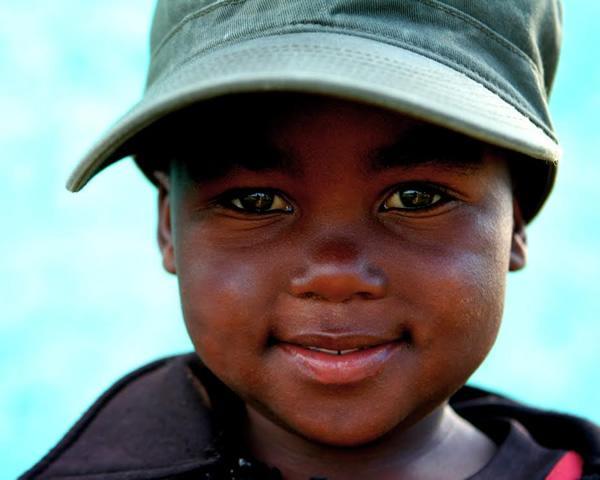
|
|
The young son of a Xhosa witchdoctor at Coffee Bay. ©Tanya Linnegar Photography.
|
"We enter into a covenant that we shall build a society in which all South Africans, both black and white, will be able to walk tall, without any fear in their hearts, assured of their inalienable right to human dignity — a rainbow nation at peace with itself and the world." — Nelson Mandela, Inaugural Address, Pretoria 9 May 1994.
The term, “The Rainbow Nation” was coined by Bishop Desmond Tutu to describe post-Apartheid South Africa after the country’s first democratic elections and was used by President Nelson Mandela in his Inaugural Address.
South Africa is truly a rainbow nation, as may be seen from the following facts and figures:
Population:
-
Over 64 million
-
African: 79.4%
-
White: 9.2 %
-
Colored: 8.8% (The label “colored” is used for people of mixed race, descended from African slaves, Khoisan, Whites and indigenous Africans)
-
Indian and Asian: 2.6%
Official languages:
English, Afrikaans and nine other African languages, reflecting the vast ethnic differences in the indigenous groups.
Religions:
Almost 80% of the South African population practice a form of Christian faith, but many other religions are practiced.
In the post-apartheid era, racial barriers are officially down, but old tensions still simmer beneath the surface. The very high South Africa unemployment rate of, which has risen to 35%, has led to serious crime and racial tension.
The sad fact of South Africa today is that millions are living in abject poverty, in “squatter camps” or “informal settlements” (tin shanties on the edge of towns). Those more fortunate unskilled workers find employment in middle-class households as maids, children’s “nannies,” or gardeners, earning meager wages and often supporting large extended families. There is a staggering gap between rich and poor, with those on the other end of the divide living millionaire lifestyles.
Interracial marriages are rare, but more frequent between older white men and younger African women, or between various African ethnic groups. Interracial socializing is uncommon among adults, but is more usual among the younger generation, who now attend multi-racial schools and universities.
Despite the diverse cultures and social divisions, the visitor will be amazed at the enormous goodwill demonstrated by ordinary citizens in everyday life. Leaving historic and present racial tensions aside, as a South African born and bred, I propose the following itinerary for the first-time traveler, in order to get to know something of this amalgam which makes up the “Rainbow Nation.“
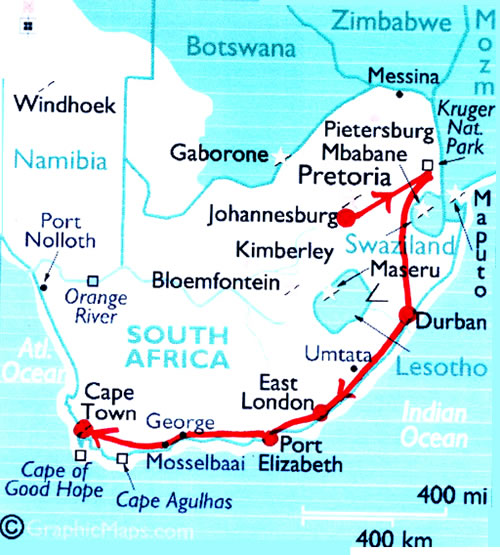
|
|
Map of proposed route for independent travel in South Africa.
|
My proposed itinerary is based on a 3-week independent tour:
Delve into South Africa’s Gold-mining Past and the lives of African Mine-workers.
Day 1: Arrive at O. Tambo (Johannesburg) International Airport. Pick up hired car at the Airport. Drive to Gold Reef City Hotel in Gold Reef City — 30 minutes from the Airport — a large theme park and fitting introduction to South Africa.
Day 2: Go down Shaft 14, a mineshaft which was in use from 1887 to 1971; Watch a re-creation of the entire gold-mining process; Thrill to the “isicathulo” (Gumboot Dance) — the traditional dance of the migrant mine-workers. Gumboots were the standard uniform and are used to great effect to keep the rhythm of the dance.
Meet Multi-Cultured Africans
Day 3: Join Soweto Tours. Soweto is the predominantly black township (South Western Townships) in which about 65% of Johannesburg citizens reside. All 11 official languages are spoken in Soweto!
The tour for 2-7 people departs from and ends in Rosebank, an affluent suburb.
On this tour you will :
-
Enter Soweto at Diepkloof Extension, the “Millionaires’ Row”
-
See a hostel, which used to be single-sex accommodation for migrant workers and is now informal family lodging
-
Visit Ekhukhanyeni Crèche, a shipping container transformed into a children’s crèche
-
Visit a shebeen (home tavern) to taste umqombothi (traditional beer)
-
Enjoy the sights and sounds of African streets, lined with herbalists and other interesting stores
-
See Baragwanath, the largest hospital in the Southern hemisphere
-
Pass through Soweto suburbs into an informal settlement, where you are free to chat to the residents
-
Lunch in a Soweto restaurant, offering traditional moroga (spinach), umqhusho (samp and beans), mogodu (tripe) and dombolo (steamed bread.)
-
This tour will give you a glimpse into the life of Sowetans.
-
** It is NOT recommended to drive into Soweto (or any other South African township) on your own, as you might be a target for criminals!
Meet Middle-Class South African Families and Enjoy the Wildlife
Day 4: Depart Johannesburg for the Kruger National Park, entering at Numbi Gate, to arrive at Skukuza rest camp.
Skukuza is the largest rest camp in the Kruger National Park, surrounded by excellent game-viewing territory. Here you will meet middle-class, nature-loving South Africans of different cultures, on family vacations. Take the opportunity to chat. You will find them open and friendly, eager to inform you about their country.
Be sure not to miss a game drive or walk with a trained game ranger who will be keen to inform you about the environment and wildlife, and how the Parks Board incorporates local inhabitants into its conservation projects.
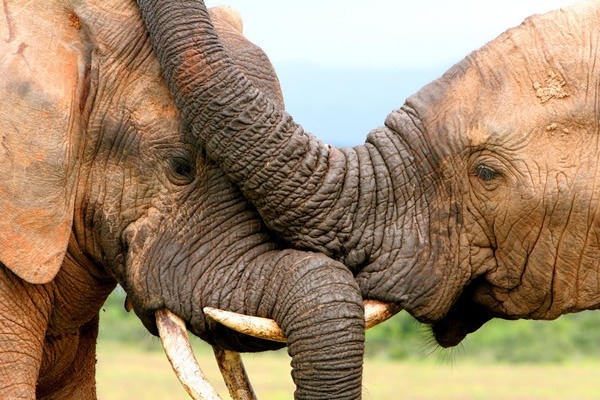
|
|
Meeting elephants close-up in the Addo National Park. ©Tanya Linnegar Photography.
|
Day 5: Skukuza — game viewing in your own vehicle or with a game ranger.
Day 6: Drive from Skukuza to Berg-en-Dal — a smaller rest camp. Overnight here, doing day trips in the area.
Day 7: Depart from Berg-en-Dal — exit at Malelane Gate.Take N4 to Nelspruit and N3 via Pietermaritzburg to Durban. It is about 400 miles from Nelspruit to Durban
Days 7–8: Durban
Durban is famous for its warm Indian Ocean, golden beaches, sub-tropical climate and as the melting pot of Zulu, Indian, and European cultures. The population is an exciting blend of English-speaking Whites (descendants of British Settlers), Indians (originating from indentured labor), and Zulu.
-
Visit the Jumah Mosque (the largest Islamic mosque in the Southern hemisphere)
-
Shop in the African-Oriental Victoria Market
-
Stroll along The Golden Mile – the marine promenade – packed with stalls selling Zulu handcrafts
-
Go for a Rickshaw Ride. The Zulu rickshaw pullers have been a feature of Durban beachfront for decades. With their giant head-dresses and colorful costumes, they were a mode of transportation in the early 1900s, but now mostly cater to tourists.
Tourists should be aware of a criminal element on the Golden Mile! See: “Sensible Rules for Safe Travel in South Africa written by me for Transitions Abroad for more details..
An organized excursion is recommended in order to experience local tribal culture. Thompsons Africa offer a range of tours such as the Shakaland Tour.
During this day-trip you will:
-
Visit a Zulu kraal
-
Taste Zulu beer
-
Watch traditional dancing
-
See the handcrafts of spear-making, shield-making, ceramics, beadwork and hut-building
-
Visit a witchdoctor (iSangoma)
-
Enjoy a lunch of South African specialties
-
Tour with Thompsons Africa
Day 9: Leave Durban and travel on the N2 coastal road to Mthatha (280 miles). Turn off the main road to the Wild Coast resort of Coffee Bay (1-hour drive from N2).
Meet the Xhosa
Days 10-11: Coffee Bay.
A Xhosa guide will accompany you to a village where you will meet a Sangoma and learn something about tribal customs. See: “Coffee Bay on TransitionsAbroad.com for more info.
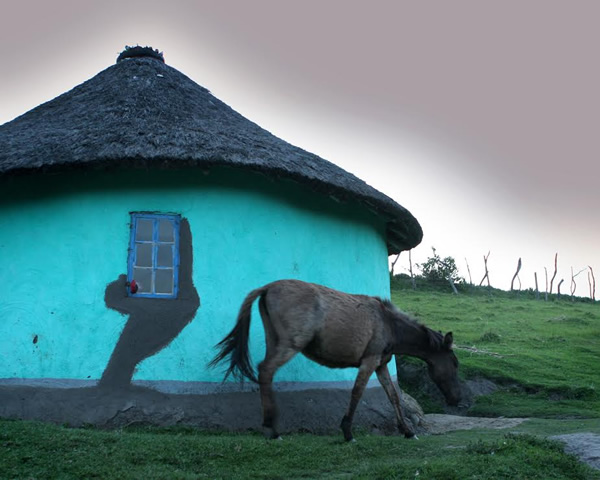
|
|
A Xhosa hut in the Eastern Cape countryside. ©Tanya Linnegar Photography.
|
Day 12-14: Leave Coffee Bay. Drive via N2 to East London (180 miles).
Drive to Bonza Bay, Nahoon, Eastern and Orient — some of East London’s lovely beaches.
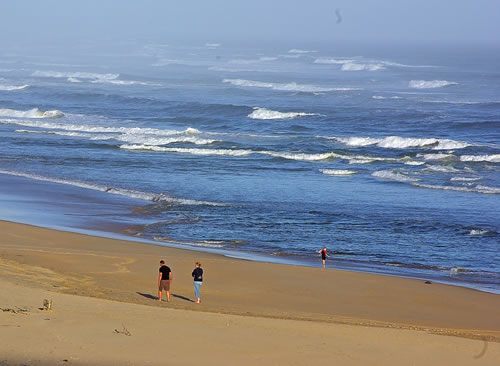
|
|
Wonderful South African beach – Eastern Cape.
©Ian Harris.
|
Buy traditional gifts from Xhosa craftswomen, who you can watch working on their intricate beadwork and handcrafts on the Esplanade.

|
|
Xhosa beadwork on sale on the East London beachfront.
©Pearl Harris.
|
Day 15: Leave East London on R72 coastal road via Port Alfred, then on N2 to Port Elizabeth.
Meet Africans and Descendants of British Settlers
Days 16-17: Port Elizabeth — “The Friendly City”, this is S. Africa’s 5th largest city. The Nelson Mandela Metropolitan area has a population of 1,5 million — an admixture of European descendants, Africans, Asians and coloreds.
“Admiral’s Lodge Guest House” in Summerstrand, near the beachfront, accommodates visitors in a typical English-speaking South African home, with a warm welcome and hearty breakfast assured by friendly hostess, Trish Brink.
Once again, a local tour is recommended, for example Fairfield Tours.
This guided tour, for a minimum of 2 people, will:
-
Show you the city of Port Elizabeth, where the 1820 British Settlers landed in Algoa Bay
-
View aspects of Settler history, including the Donkin Reserve
-
Focus particularly on African history
-
Visit townships from the apartheid era such as New Brighton, Kwazakhele etc.
Day 18: Port Elizabeth, Cape Town, via N2 (480 miles)
Meet the Cape Malays and Afrikaners of the Western Cape
Days 18-20: “The Mother City” of Cape Town, South Africa’s oldest city, offers a wealth of culture and history.
Stay in a 5th-generation Afrikaans family-run guesthouse — “Sonskyn” — right on the beach with a magnificent view of Table Mountain, to experience true Afrikaner hospitality.
A cultural tour, is recommended and there are many to choose — from small to large, budget to luxury.
Look for a tour that allows you to:
-
See African Townships, such as Langa, Gugulethu, Crossroads
-
Visit Bo-Kaap (formerly known as the Malay Quarter) which housed slaves during the 17th and 18th centuries
-
See the oldest house, the Bo-Kaap Museum, a tribute to the Muslim settlers, many of whom came from Indonesia, Sri Lanka, India and Malaysia and were enslaved by the Dutch-East India Trading Company.
The Cape Malays played an important part in the development of South Africa’s language and culture. Afrikaans evolved as a language, due to the simplification of Dutch in order for slaves to communicate with their Dutch masters. Educated Muslims were the first to write in Afrikaans.
Do not miss: (if you are in Cape Town on January 2nd) the “Minstrel Carnival” — a joyous street party introduced by Muslim slaves as their one and only annual day off work.
Meet Descendants of the French Huguenots
Day 21: Cape Town to Stellenbosch
Tour the Stellenbosch Wine Routes on a day trip. Most of these estates were established by the French Huguenots who came to the Cape in the 17th century, many South African surnames today e.g. “de Villiers”, bearing evidence of these settlers. The estates they founded, such as “La Motte,” and “Fleur du Cap,” remain a lasting part of the country’s heritage, with wines of world renown produced here.
Choose a Wine Route day-tour for the tasting of South Africa’s superb wines, without the risk of driving yourself: Stellenbosch (SA-V)
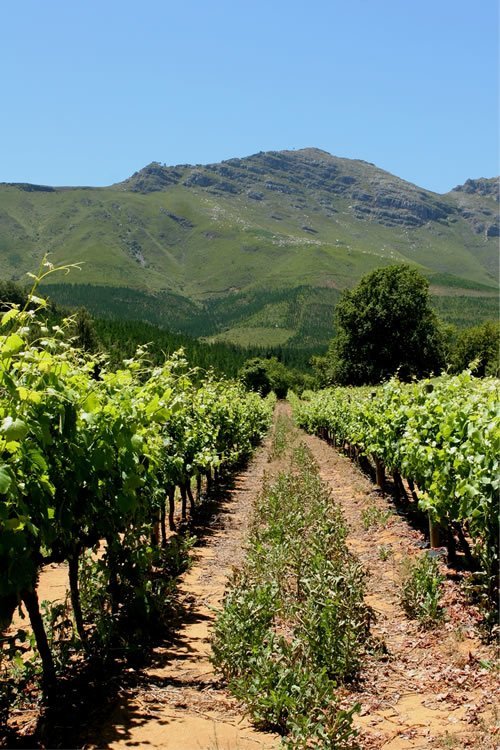
|
|
A wine estate on the Stellenbosch Wine Route. ©Tanya Linnegar Photography.
|
Day 22: Depart from Cape Town, vowing a return visit to the Rainbow Nation!
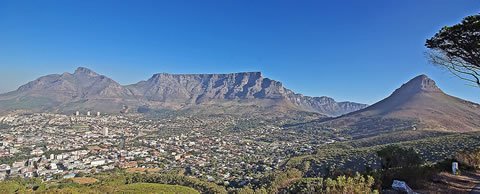
|
|
Cape Town — The Mother City — lies beneath Table Mountain. ©Ian Harris.
|
This 21-day Slow Travel itinerary provides some opportunities of meeting The Rainbow Nation. If you are able to spend a longer period in South Africa, so much the better. One would, however, need a lifetime to get to know the country and its people in any great depth. After nearly a lifetime spent in South Africa, I can make no such boast.
Pearl
Harris was born in South Africa where she spent
most of her life before emigrating to the Czech Republic
with her husband, Ian, in 2002. Besides travel, her
passions are writing, photography, reading, and animals.
She has a B.A. in English & Linguistics, post-graduate
Diploma in Translation and TEFL qualification. Formerly
an EFL teacher, Pearl now freelances and you can find more information on her website about her work proofreading & editing.
Pearl has been widely published in magazines
and on the web. Her travel memoirs, From
Africa to Buková, and the sequel Where
is my Home? are available on Amazon.com.
Tanya Linnegar, Linnegar Photography has authored
an article on Coffee Bay in South Africa for Transitions Abroad.
|
